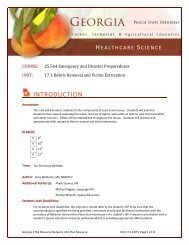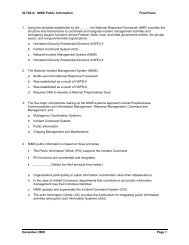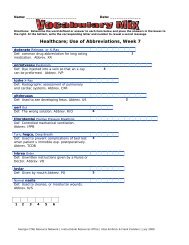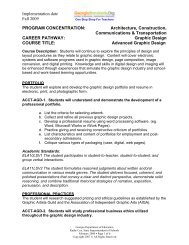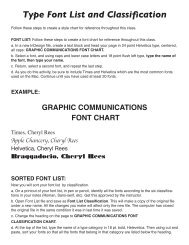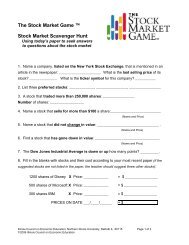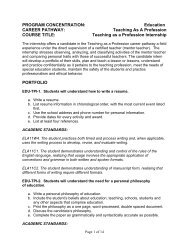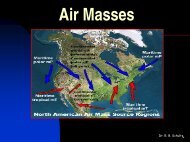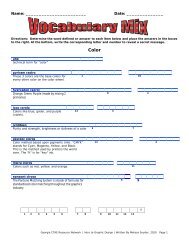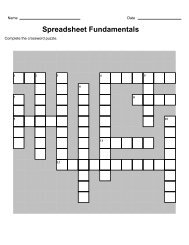emt-basic curriculum module 4
emt-basic curriculum module 4
emt-basic curriculum module 4
Create successful ePaper yourself
Turn your PDF publications into a flip-book with our unique Google optimized e-Paper software.
State of WisconsinEMT-Basic: A Practice BasedApproach to EMS EducationIV.8. Hypoxia9. Stoke10. Drug or alcohol withdrawal11. Dysrhythmias12. Hypertension13. Pregnancy complications14. Unknown origin (idiopathic)B. Types1. Simple partial seizuresa) Muscle twitching localized to one part of the bodyb) Patient responsive and aware of occurrence2. Complex partial seizuresa) 1-2 minute durationb) Blank stare exhibited by patientc) No response to commands3. Absence (petit mal) seizuresa) Common in pediatricsb) Bland stare, blinking, chewing motion, lack of attention4. Febrile seizurea) Most common in children; rarely life-threateningb) Caused by high feverc) Short in duration5. Generalized Seizure-Tonic-clonic seizurea) Tonic-clonic seizures-phases(1) Aura(2) Tonic phase-muscle contraction for 15-30 sec.(3) Clonic phase-convulsions (muscles contract andrelax; approximately 1-2 minutes)(4) Postictal Phase-last 15-30 minutes; patient difficultto arouse; incontinence may occurb) Status epilepticus-prolonged seizure activity without astate of meaningful consciousness; true emergencyC. Emergency medical care1. Assure patency of airway2. Position patient on side if no possibility of cervical spine trauma3. Have suction ready4. Assist ventilations if needed5. Oxygen therapy6. Transporta) Although brief seizures are not harmful, there may be amore dangerous underlying conditionb) Rule out trauma, head injury can cause seizuresStroke (Cerebral Vascular Accident (CVA))A. Types/causes of stroke1. Ischemic strokea) ThrombosisModule 4-49



